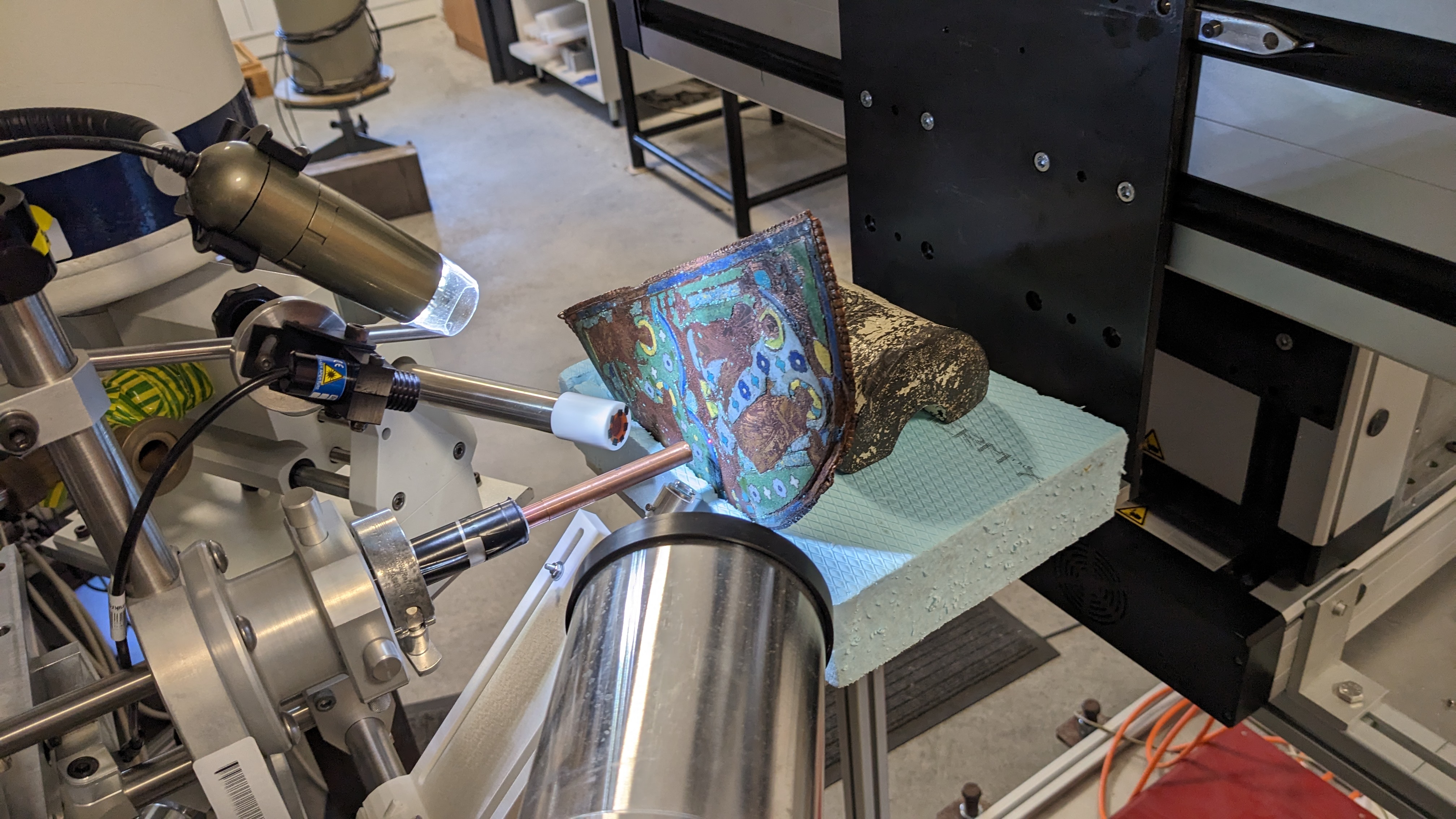Service: ATOMKI Ion Beam Analysis
Platforms
Fixlab
Techniques
Particle induced gamma-ray emission (pige)
Particle induced x-ray emission (pixe)
Rutherford backscattering spectroscopy (rbs)

Reference
An ion beam analytical set-up, installed at the beamlines of the ATOMKI Tandetron accelerator, serves to determine the concentration and distribution of elements both in vacuum and in-air (for larger or sensitive artefacts) with high lateral resolution.
IBA is based on the interaction of an energetic ion beam with the electrons and nuclei of the atoms in the material under investigation. Depending on the type of interaction X-rays, gamma rays, primary scattered or secondary particles are emitted with energies characteristics to the emitting atom or nucleus. The advantages of the IBA methods are that they are fast, sensitive, multi-elemental, produce high-accuracy quantitative results, they require no or very minimal sample preparation, and very small quantities can be measured in a quasi non-destructive and non-invasive way. Further advantage of IBA is analysis can be done in-air in the case of vacuum-sensitive or large samples. With the simultaneous application of complementary IBA techniques a complex analysis of a sample can be achieved in a single measurement in a very short time (typically few minutes). Most common IBA techniques: PIXE, PIGE, RBS. The concentration and distribution of elements provide information on the origin, production technology, eventually age, raw materials, and conservation state of the objects, as well as about the lifestyle and trade routes of our ancestors.
In-vacuum measurements are limited to objects smaller than 10cm.
There is no size limit for in-air measurements.
Fields of application
Archaeometry
Heritage science (cultural heritage discipline)
Physics
Materials
Gold (metal)
Iron (metal)
Bronze (metal)
Copper (metal)
Ceramic (material)
Ceramic glaze
Colored glass
Inorganic materials
Methods
Other information
-
Input: dimensions, description of the object, previous measurements
-
Output: concentration data, report, elemental maps


